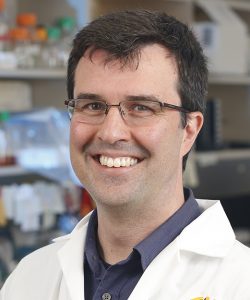High-throughput diagnostic sequencing for newborns with rare disease
Women and Children

David Dyment
613-737-7600 ext 4420
CHAMO, Children’s Hospital of Eastern Ontario, and University of Ottawa
Highlights
The results of this pilot project showed the benefits of next-generation sequencing (NGS) in the neonatal intensive care (NICU). The NGS methods used was able to diagnose 8 of the 20 children or 40% and this was significantly more than the one child that was diagnosed by traditional methods. This has a tremendous potential for how we deliver care to the premature neonates. We will now be able to provide a molecular diagnosis during the neonates admission in the NICU. This diagnosis has the ability to provide information on prognosis, surveillance and, in some neonates it can have a direct impact on medical management. By performing these experiments in the local Molecular laboratory at the Children’s Hospital of eastern Ontario we were able to develop local expertise in NGS as well as foster a team approach to molecular diagnosis with the neonatologist, geneticist, biostatistician and other specialists all taking part. We have now expanded and continued this pilot work with other externally funded NGS-based projects. These “next step” studies will focus on other outcomes prior to incorporation into routine clinicial care. The CHAMO Innovation project resulted in several publications, posters and learning opportunities for trainees. Most importantly, the diagnoses had both a non-direct and direct impact on the children and their families.
Abstract
Rare disease often presents in the first days and weeks of life and can require complex management in the setting of a neonatal intensive care unit (NICU). The standard-of-care for these sick babies includes exhaustive consultations and investigations to determine a diagnosis. Unfortunately, traditional genetic or metabolic investigations are costly and often fail to arrive at a final diagnosis in a timely manner. This represents a lost opportunity, as a diagnosis can limit or even halt further invasive, and at times futile, investigations for the neonate. Importantly, an accurate diagnosis can inform prognosis and potentially guide management decisions.
To improve the care for newborns with rare disease, we applied next-generation sequencing (NGS) as a diagnostic tool in the NICU; 20 patients were ascertained both retrospectively and prospectively. Both parents and child were sequenced by NGS for a panel of genes deemed to be “disease relevant” using an Illumina MiSeq sequencing platform. The data was interpreted with a standardized informatics pipeline and returned to care providers as a written report. The results of the study was that of the 20 children studied, 8 received a diagnosis using this approach; a diagnostic success rate of 40%. The diagnoses included individuals with rare syndromes such as renal tubular dysgenesisn (RTD), myotubular myopathy and Denys-Drash syndrome. As an example of a direct benefit, the identification, and treatment of low aldosterone in the child with RTD was recognised after the molecular diagnosis. After the subsequent initiation of treatment, his renal disease resolved. This study highlights the potential of NGS to rapidly deliver molecular diagnoses and its broad uptake will alter how we deliver care in the NICU.

